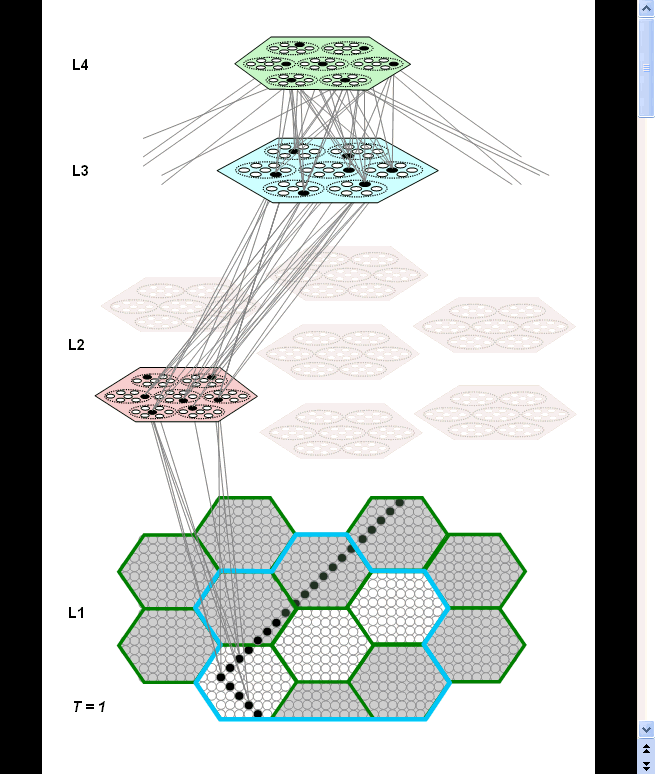Multi-level Spatiotemporal Cortical Memory Traces
Higher level macrocolumns ("macs") have larger spatial receptive fields (RFs). The L3 mac's RF includes seven neighboring L2 macs (shaded rose, six dimmed). Each L2 mac has an RF at the L1 (LGN) level, which can be thought of a small aperture onto the visual world. Note: the hexagons at L1 are not macs. L1 is the 'raw' input level; each L1 hexagon is just a 2D hexagon-shaped array of binary 'pixels', viewable as projection cells of LGN. Thus, L1 uses a localist representation. Note: what's called L1 here corresponds to what's called L0 in most other figures / animiations. Sorry for notation inconsistency.

For simplicity here, the synaptic projections from L1 hexagons to L2 macs are shown as completely non-mixed. Thus, there is a 1-to-1 correspondence between the L1 Hexagons and the L2 macs. In reality, the synaptic projections would be mixed. Our computational model is agnostic to that. The same is true at other all levels as well, e.g., all or parts of some of the seven L2 macs comprising the blue L3 mac's L2 RF, would be shared by other neighboring L3 macs (not shown).
Note that L3 codes have twice the persistence of L2 codes and L4 codes, twice that of L3 codes. This effects a hierarchical temporal nesting of sparse distributed codes, i.e., "chunking". Thus, a single L3 code active on T=1 and T=2, will be able to associate (in both he bottom-up and top-down directions) with L2 codes that activate on either T=1 or T=2. Furthermore, in each level, the codes active at T increase their horizontal (H) weights onto the codes active at T+1 (i.e., temporal chaining) (H wts not shown here). Thus, the model handles time with a combination of chaining and chunking mechanisms. Note that since a code at L2 or higher persists for at least two consecutive time steps, it can recurrently associate with itself as well as with the subsequently activated code (described here).
